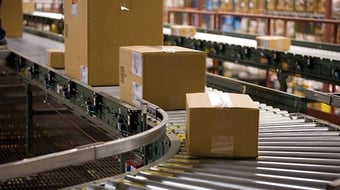
Thermoforming design. When you read those words, what comes to mind? What do you expect the thermoform to accomplish for you? How it looks on the shelf? How it functions? What are the goals of the brand and overall aesthetic? How would it move through your supply chain? It appears that these are just some of the important considerations, but thermoforming design seems to go well beyond the visual!
Our clients tell us that an effective thermoform should; look good, catch the buyer’s attention, be functional and protect your product. Additionally, all these considerations and more, need to accommodate the budget and be designed to meet your specific requirements.
When it comes to thermoforming design, the actual aesthetics are just the tip of the iceberg. There are also supply chain and process-oriented questions to consider. How would the thermoform be handled and packed with the end to end considerations of your supply chain? Here are a few important ideas we consider here at Deufol when we begin a new thermoforming project.
In this post, I’ll share 3 important considerations when designing your next thermoform piece.
1. What are the budget considerations?
2. What is the end use of the thermoform?
3. What is most important to your customer?
1.What are the budget considerations?
The design phase is as much about understanding the budget as it is the packaging itself. What is the end use of the thermoform? Where will it be loaded? Will it be robotically assembled or manually loaded?
Often, these decisions are driven by budget. For example, many of our customers seek to strike a balance between driving down per unit packaging costs and limiting capital investment.
At Deufol, we strive to understand whether our clients produce with automated systems, semi-automatic systems or manual. With knowledge of these factor the appropriate design can be recommended.
2. What is the end use of the thermoform?
One of the biggest challenges in retail, for example, is adjusting to meet rapidly changing customer demands. If you distribute through retailers, especially big-box retailers, you may know this challenge all too well.
One retailer may want different packaging than others. Another retailer may give you an end cap that requires packaging changes. You may have an opportunity for promotion in the aisle, but you also need a pop-up display to make it happen.
If your thermoform might not require retail appeal. The design criteria for OEM and distributors applications may require a different set of design criteria, such as robotic loading, specific material properties, and recycling and environmental considerations.
It’s wise to understand all these inputs before the design process begins. Knowing the possible variations in advance will streamline the design process. During the initial design discussions think about all these possible requirements that your thermoform might need.

3. What is most important to your customer?
Thermoforming can play a big role in your customers perception of your product’s value. However, it’s not all about design. We once worked with a company that felt strongly that they needed a flashy visual design to move their product. Through our design discussions and market research, the client eventually realized that transparent packaging was more important than an eye-catching design. The customers wanted to see the product in the packaging before they made the purchase.
Conversely, many distributors and OEMs tell us that more basic designs are more appropriate for their end use customer. There are all kinds of trends impacting the customer’s buying decision today. For some customers, sustainability and environmental protection as well as online buying are important. In those cases, the design process should include renewable and environmentally-friendly materials.
In other instances, customers may want detailed information about ingredients or materials used in the product’s production. A design process then needs to be designed to make sure the right information ends up on the right product package.
For other products, safety could be a major concern. You may need to balance the security of the product with ease of use by the customer. You want something that will keep your product safe but also won’t be a major inconvenience for your customer to open.
The key to this, is working with a thermoform partner with design and engineering competence and experience. When it’s time for you to design a new thermoform or modify an existing product, don’t just focus on the visuals. Functionality and process may play an even bigger role in determining whether your thermoform is successful. ![]()





Let Us Know What You Thought about this Post.
Put your Comment Below.